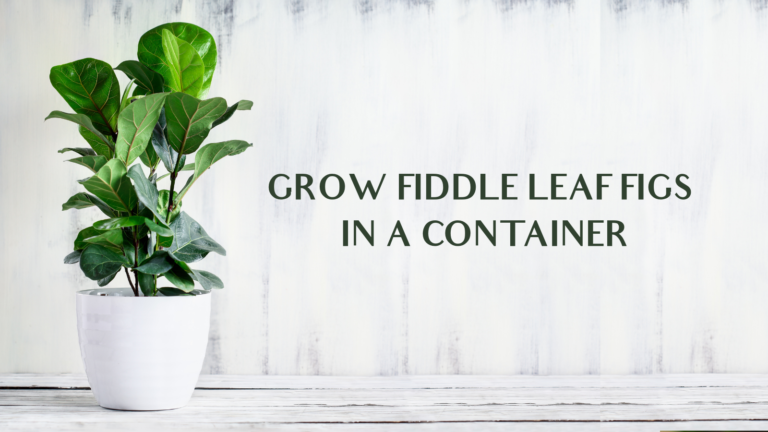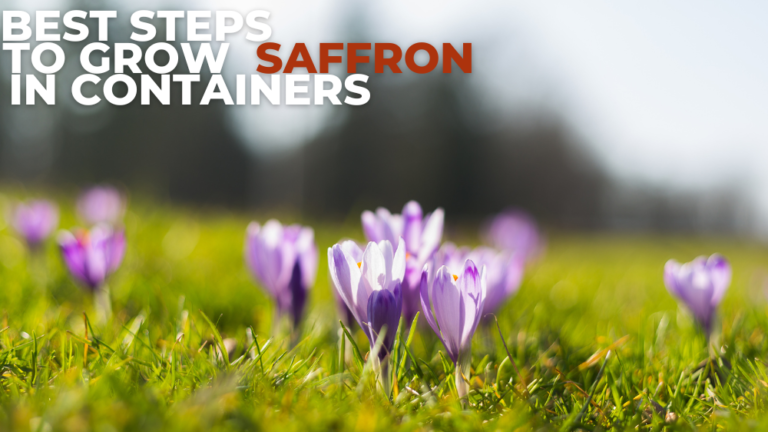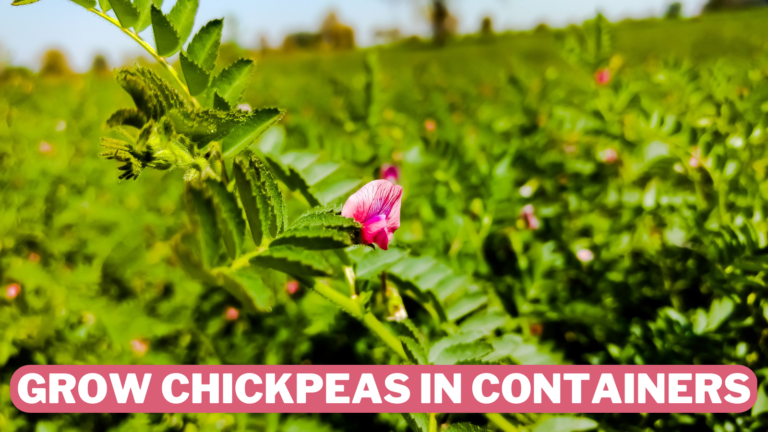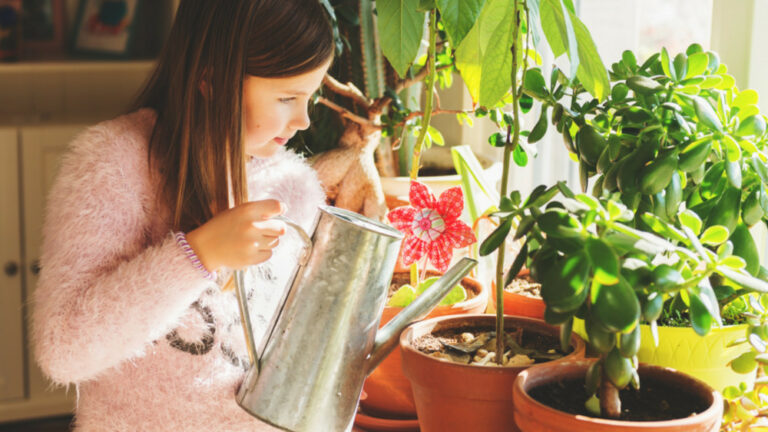Easy Steps To Grow Fennel In Containers
Easy Steps To Grow Fennel In Containers
The popular herb fennel is typically grown for its distinctive anise flavour as a food ingredient. Bulbul fennel is grown for its extensive, white bulbs, which go particularly well with fish.
Can fennel be grown in pots, though? Learn more about how to grow fennel in containers.
History And Origin Of Fennel
Fennel was widely available in the ancient Mediterranean region. Roman soldiers thought it could strengthen them.
Marathon, which translates as “grow thin,” is its Greek name. The Greek name of fennel reflects the idea that it can aid in appetite suppression.
Greek mythology holds that Prometheus, the person credited with introducing fire to humanity, hid it inside a fennel stalk.
Devotees of Dionysus, the god of wine, theatre, and agriculture, used a fennel stalk with a pine cone on top as a wand. This Wand was called the Thyrsus.
Pliny, a Roman author, asserted that fennel had excellent medicinal qualities and was particularly advantageous for vision.
Fennel was deemed necessary for every garden by the great emperor Charlemagne in 812 AD (CE) because of its extraordinary therapeutic properties.
Throughout history, different cultures have held a variety of fennel-related beliefs. Even some Western cultures believed fennel could ward off ghosts and evil spirits. In the past, they used to fill their keyholes and hang them from their doorways.
In the 1200s, English people used fennel as an appetite suppressant and as fuel during their fasting days.
Fennel was first used in a patented medicinal elixir known as absinthe in the late 1700s, some 500 years later. After World War I, it gained popularity among Bohemians in Europe and the US.
Spanish missionaries brought fennel to North America for the first time. They raised it in their herb gardens. From these mission gardens, it escaped cultivation, and today, it grows untamed in California.
Today, fennel is the most popular vegetable in Europe. Fennel seeds are also used as a spice in food worldwide.
Due to its intriguing flavour, availability in various forms, and distinct health advantages, it has earned a place in modern kitchens.
Types Of Fennel
There are two types of fennel.
1. Herb Fennel
The herb fennel (Foeniculum vulgare) is mainly grown for its seeds. It is also known as sweet fennel and is used to flavour food.
The fennel herb plant can reach heights of three to five feet. All of the foliage's parts are edible, and it has feathery, dill-like foliage.
The herb is a common ingredient in soups, salads, fish dishes, and teas. Additionally, fennel seeds are utilized in drinks, desserts, and baked goods.
Late summer sees the appearance of yellow flower clusters. It is harvested and used for the leaves, stems, and seeds.
Hardy and perennial sweet fennel seeds, leaves, and stalks have a flavour similar to sweet licorice.
2. Vegetable Fennel
Due to its flavour, the vegetable fennel (also known as Florence fennel or Finocchio – Foeniculum vulgare var. dulce) is frequently called anise fennel or fennel of Florence.
There are many recipes for vegetable fennel dishes. Florence fennel is related to carrots and yields a vegetable that resembles a bulb.
Vegetable fennel is shorter in height than herb fennel. The fennel bulb is usually taken before the plant blooms.
You can always wait till a few plants have flowered before harvesting them, then take both at once. Fennel seedlings are also grown as microgreens.
Varieties Of Fennel
Numerous plants go by the name “fennel.” All fennel varieties have tall, feathery leaves that resemble dill plants and an anise-like scent.
Here, I’ve shared the most popular varieties of fennel.
1. Florence Fennel
The annual plant is known as Florence fennel. Foeniculum vulgare azoricum is frequently used as a vegetable.
Florence fennel, also known as “bulb fennel,” has a broad, bulbous root that resembles celery and grows to a height of about 3 feet.
Italian cooking frequently uses the Florence fennel's leaf stems. Florence fennel can be used in stir-fries, either boiling or steamed or in salads as raw slices.
Washington State University Extension suggests the Florence fennel varieties “Trieste” and “Zefa Fino.”
2. Sweet Fennel
A perennial plant known as sweet or common fennel, Foeniculum vulgare is grown for its seeds and as a herb.
Sweet fennel can grow to be between four and five feet tall. Fennel leaf is a prominent ingredient in sauces and mayonnaise in French and Italian cooking. Fennel is a component of specific bread, pastries, and alcoholic beverages.
3. Bronze Fennel
Bronze fennel or Foeniculum vulgare, “Purpurascens,” is a sweet fennel whose leaves have an attractive bronze cast.
The plant is beneficial not only as an herb but also as an ornamental in the flower garden. Bronze fennel is often planted in butterfly gardens since it attracts butterflies and other beneficial insects.
In particular, the bronze fennel is a vital host plant for the black swallowtail butterfly.
Steps To Grow Fennel In Containers
1. Choose The Right Container To Grow Fennel Plants
Depending on the kind, fennel plants can reach 3 to 5 feet. Choose a container with drainage holes at the bottom at least 12 to 14 inches deep, as its roots extend widely to prevent waterlogging.
Can fennel be grown in pots? If the pots are large enough, yes. For starters, fennel produces a lengthy taproot that requires a lot of depth.
Additionally, by “earthing up,” you can develop susceptible fennel bulbs. To protect the bulbs from the sun as they grow.
Fennel is simple to grow in pots, which may be an excellent way to prevent the plant from self-seeding in undesirable landscape areas.
The container must have drainage holes, be at least 10 inches deep, and be the same width. Space seeds 4-6 inches apart in rows 18 inches apart.
Typically, seeds germinate in 7 to 10 days. Florence fennel plants should be spaced 8 to 12 inches apart after they start to bulb. Plant 3–4 feet of row every 3–4 weeks to provide a steady supply of bulbs.
2. Selecting A Planting Site To Grow Fennel
The key is a sunny planting location with sufficient soil drainage. Raised beds and containers are additional possibilities in addition to planting in the garden.
Fennel should not be grown in the same region as dill or coriander to prevent cross-pollination. This will change the flavour of the seeds.
Remember to account for the mature size of the fennel variety before planting to prevent it from shading the surrounding plants.
Additionally, planting near beans or tomatoes is not advised because it may stunt their growth.
3. Soil To Grow Fennel In Containers
Use loamy, well-draining soil to grow fennel in containers. Additionally, it's a terrific idea to improve the potting soil by adding 20% old manure or compost.
You can aerate your soil by turning it with a trowel throughout the middle of the growing season. Fennel prefers fertile, well-draining soil.
Before planting, add compost Performance Organics All Purpose In-Ground Soil to your existing soil to improve it.
Use loamy, well-draining soil to grow fennel in containers. Additionally, it's a terrific idea to improve the potting soil by adding 20% old manure or compost.
You can aerate your soil by turning it with a trowel throughout the middle of the growing season. But take additional care to protect your fennel plant from harm.
4. Sunlight To Grow Fennel In Containers
Fennel thrives in containers with ample sunlight. Choose a pot deep enough for its long taproot, filling it with well-draining soil.
Position the container in a spot receiving at least 6-8 hours of sunlight daily. Fennel, a sun-loving herb, requires direct sunlight to flourish.
Regularly water the plant, keeping the soil consistently moist but not soggy. With proper sunlight and care, your container-grown fennel will thrive, offering fresh flavours for culinary delights.
5. Watering Fennel Plants In Containers
Fennel cultivated in containers must be constantly moist without becoming waterlogged, so plant it in well-draining soil and water it frequently.
To get the most delicate flavour, harvest the bulb before it bolts. Fennel prefers evenly moist but not saturated soil.
When the soil feels dry, about an inch deep, water, but make sure the plant doesn't get soaked.
The soil will dry out quickly if you grow the plant in a bright, well-ventilated area. Keep the soil just barely damp at all times.
Water the plant only when the topsoil seems dry to the touch while growing inside. Additionally, keep the leaves dry and always water them from the roots.
6. Temperature And Humidity To Grow Fennel In Containers
Fennel is a perennial plant within its growth zones, but gardeners outside those zones frequently grow it as an annual plant.
Frost and low weather can harm the plant. Additionally, hot and dry weather may encourage it to bolt and set seed.
As long as the temperature is relatively warm, gardeners in mild climes can occasionally plant in the late summer for a fall harvest.
The plant thrives in conditions with moderate humidity and temperatures between 60°F and 70°F.
7. Grow Fennel From Seeds
Spring is the optimal time to plant fennel seeds. They can be planted in containers or immediately outside.
We will focus on seed growing in pots since they have a higher chance of surviving. However, if you want to attempt growing things outside, you have to scatter some seeds in the location where you want them to grow and give them a little water every so often.
However, if you'd prefer to grow fennel seeds in containers, the following instructions should be able to assist you.
- Assemble fennel seeds, appropriate seed compost, and seed trays.
- The compost should be put in a compartment. Almost all of the compost should be at the top.
- Put a few seeds on the ground.
- The soil over the seeds just a little.
- Continue until all of your compartments are filled.
- To evenly wet the seeds, softly mist the tray.
- Put the tray somewhere warm and sunny.
- When you see that the soil is getting dry, mist the tray.
- In a few weeks, the seedlings should start to appear.
- They can go in their pots around 7 cm (about 3 inches) tall.
- You must harden off the ones you intend to put in the garden. Leave them outside for a few hours every day.
8. Grow Fennel Bulbs
Grow your delectable companion from a more straightforward bulb. Even a fennel plant from the store will work!
Just use the leaves when cooking, and don't touch the bulb. If you've never seen fennel, the bulb is the plant's bulbous white base.
- Pick a jar or shallow dish.
- In the vessel, place the base face-down.
- Add enough water to cover the bulb's bottom half.
- Put the bowl in a bright spot.
- Water should be changed every few days.
- Within a few days, new shoots should appear!
- New, stronger roots will eventually emerge.
- The fennel can be kept in water and harvested frequently.
- The traditional bulb can also be moved into a pot.
9. Fertilizing Your Fennel Plants
The amount of compost needed to grow fennel is only 20%. Later, throughout the plant's growing season, you can side-dress it twice more with compost or aged manure.
Use a balanced liquid fertilizer to fertilize a plant over four weeks old. Only use half of the recommended dose listed on the product's label. Feed the plant every four to six weeks.
Fertilizer is typically unnecessary for fennel. However, it will value compost incorporated into the soil when planting and layered around its base periodically throughout the growing season.
10. Propagating Your Fennel Plants
Due to its lengthy taproot, fennel is challenging to separate. The best way is seed propagation. If you live where fennel can only be produced as an annual plant, this is a quick and low-cost way to acquire new plants. This is how:
- Look for seed heads to develop at the end of the fennel plant's growing season.
- To gather the seeds, shake the heads over a sheet or tarp.
- For a week or two, spread the seeds out in a single layer in an excellent, dark, dry location to finish drying them.
- The following spring, sow the seeds in the garden after storing them in an airtight, labelled container.
11. Pruning Fennel Plants
If you'd like to stop the plant from going to seed, you can pinch off blossoms as they appear. This prolongs the period during which the foliage is developing and tasting at its peak.
It also prevents the plant from readily self-seeding in your garden. However, allow the flowers to bloom if you want the seeds for harvesting or self-seeding.
12. Potting And Repotting Of Fennel
An all-purpose, well-draining potting mix works nicely for fennel. To avoid needing to report your container-grown plants, pick a pot that will fit their mature size immediately.
Fennel roots dislike being disturbed, so using biodegradable pots for seedlings that can be buried in the ground is necessary.
13. Overwintering Fennel Plants
Harvest the remaining fennel off your plant if frost is predicted. If not, the vegetation will probably be harmed or die.
Fennel plants can overwinter for a second growing season in warm areas but often deteriorate afterward.
Row coverings or another type of protection should be used to safeguard the plants if unseasonably cold weather is predicted in certain regions.
14. Common Pests & Diseases Of Fennel
Though caterpillars may eat the leaves, fennel rarely has significant pest or disease issues. The simplest solution is to remove them from the plants manually.
They most frequently take the form of parsley worm caterpillars, which develop into important pollinators for gardens called black swallowtail butterflies.
Therefore, if they aren't posing a severe threat, you can disregard these green caterpillars with black and yellow stripes.
Aphids can occasionally be problematic, but powerful water sprays can remove them. On edible herbs, avoid applying chemical pesticides.
Root rot can occur in soil that doesn't drain well. Try a raised garden bed or container to obtain ideal soil conditions in heavy soil conditions.
15. Harvesting Fennel
Gather fennel leaves as needed for fresh use throughout the growing season. Both raw and cooked foods use it.
Frequent harvesting will encourage a bushier growth habit and, hence, more harvestable foliage. However, a third of the plant should not be removed at once.
Bulbs can be harvested as soon as the base of the stem swells. Remove the plants and store the bulbs, unwashed, in the refrigerator for up to five days before using.
How To Take Care Of Your Fennel Plant
Fennel in pots and gardens has similar requirements. Both enjoy the sun and thrive in nutrient-rich, wet, well-drained soil.
Keeping sand moist and well-drained might be challenging, but skilled gardeners can maintain moisture in well-draining soil by adding a lot of organic matter. We will now examine the specifics of caring for the two varieties of fennel.
Conclusion
The herb fennel returns yearly because it is a transient perennial. However, the plants must be replaced after just three to four years.
Would you like to try some delicious vegan fennel recipes for your kids? Please click here to find them on my vegan website.
Fennel bulbs are grown as annuals because they are harvested whole for use in cooking. Feel free to comment here if you need help growing fennel in containers.
I trust you enjoyed this article on the Easy Steps To Grow Fennel In Containers. Please stay tuned for more blog posts to come soon. Take care!
JeannetteZ
>>>Please click here to read my all-inclusive article about Container Gardening<<<
>>>Are you interested in homegrown herbs and medicine? Please click here to find out more about it!<<<
Your Opinion Is Important To Me
Do you have thoughts, ideas, or questions? I would love to hear from you. Please leave me your questions, experiences, and remarks about this article on the Easy Steps To Grow Fennel In Containers in the comments section below. You can also reach me by email at Jeannette@Close-To-Nature.org.
Disclosure
This post may contain affiliate links. I earn from qualifying purchases as an Amazon Associate and other affiliate programs. Please read my full affiliate disclosure.
You might also enjoy these blog posts:
Easy Steps To Grow Allium In Containers
Easy Steps To Grow African Daisy In Containers
Easy Steps To Grow Peace Lily In Containers
Easy Steps To Grow Stevia In Containers
All About Healing Visualization And What You Need To Know






















